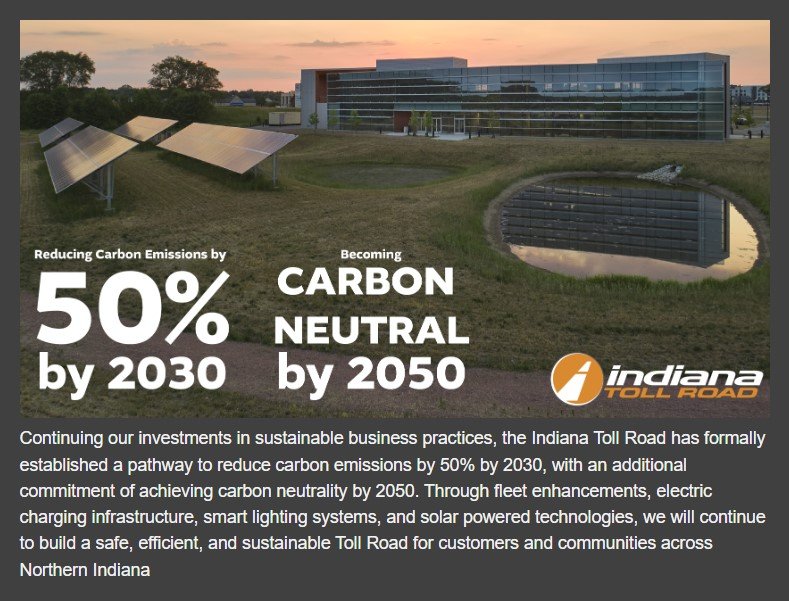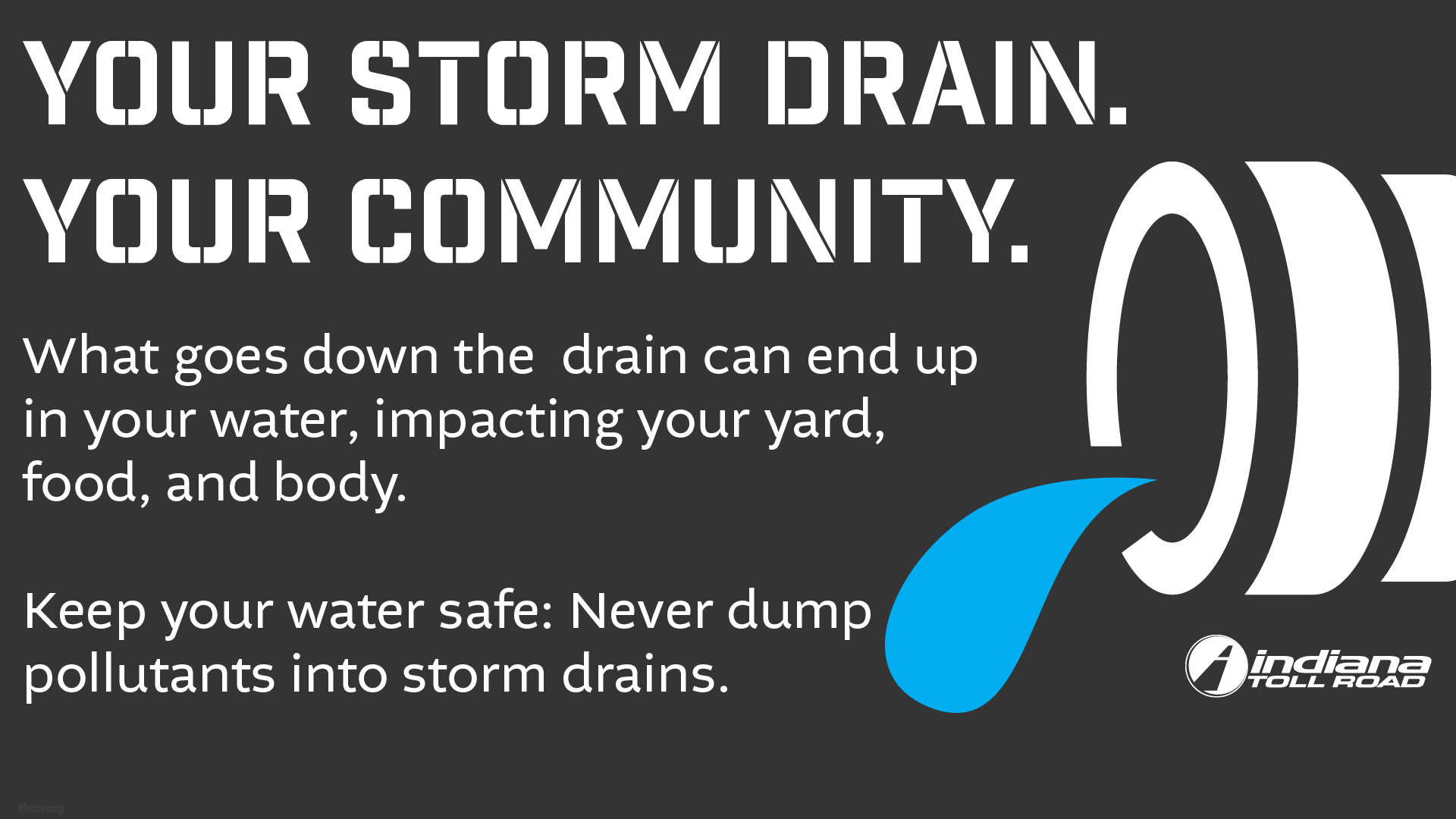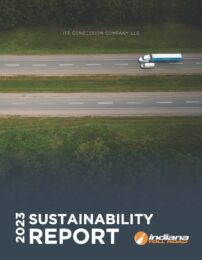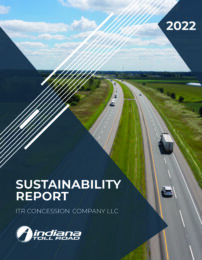Sustainability along the ITR

Operating a world-class toll road in an environmentally responsible and sustainable fashion.
Committed to the communities we serve, ITRCC embraces a long-term perspective and an agile approach to every aspect of our business. We’re continually improving as we strive to apply new technologies and operational strategies that enhance our environmental and social impacts.

Expanding our investments in renewable energy
Partnering with Solscient Energy, we secured 1,700+ additional kilowatts of solar energy through installations at 14 ITRCC locations across the Toll Road. We’re sizing these arrays to offset current electric consumption at each of these facilities. These steps advance us toward our goal of eliminating more than 1,000 metric tons of carbon emissions annually by 2030.
Timeline of ITRCC investments
- 2017: 700 trees planted along the Toll Road
- 2018: 200,000 lbs. of rubber collected through our roadway recycling program (+30% v. 2017) and repurposed for reuse in architecture, landscaping, and rubberized asphalt
- 2019: Construction of new, environmentally sustainable administration building, featuring solar panels, smart heating and cooling systems, and architecture optimized for natural light
- 2019 – 2023: 5 new salt domes designed to protect plants, animals, and waterways in local ecosystem
- 2021: Replacement of 150+ outdated desktop workstations with energy efficient equipment
- 2022: Installation of electric heat pumps at 16 facilities, replacing older natural gas boilers








